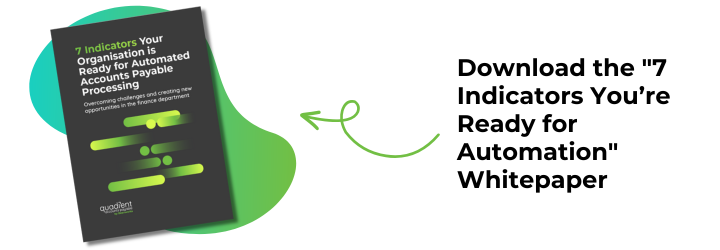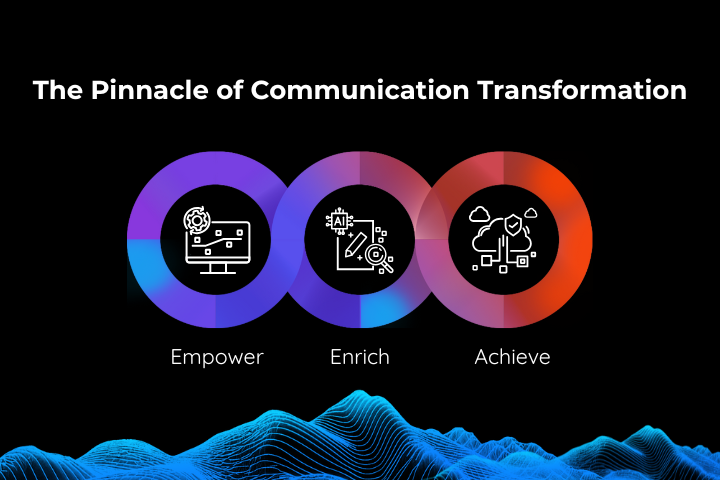
What happens when a public sector records management system stops working? What if something goes wrong with these public sector records, or a record disappears entirely?
On January 2019, the US Department of Housing and Urban Development’s (HUD) system was taken offline. Even weeks after the US government shutdown ended, the agency’s ability to process requests drastically slowed down. The agency even had to resort to manually redacting public records.
In late-January 2019, physicians from Queensland, Australia highlighted serious misgivings on an ill-thought out electronic records management system rolled out by Queensland Health. An audit uncovered flaws in the system that included: difficulty in locating critical patient data, double-dosing medication, and missing medical tests, among others.
Whether by fault, poor planning, or design, public sector records management runs into the same all-to-familiar challenges experienced by industry. However, what makes the public sector vs. industry different is the former’s mandated responsibility to the public good. Here are the five practical challenges of public records management in government.
#1 Tracking and lapse public sector records retention schedules
#2 Unauthorised public sector records access and records manipulation
#3 Assigning responsibility in maintaining government records
#4 Duplication of efforts in public sector projects
#5 Inaccurate data and incomplete e-discovery
WHAT ARE PUBLIC SECTOR RECORDS?
Public sector records are documents held by governmental organisations that keep track and provide evidence of administrative and executive transactions regarding the public good. They can include bills that are tabled, official voting records, department budgets, and the confirmation and review of government procedures, etc.
Public sector records can also be used more narrowly to refer to internal documents held by civil servants / government employees as administrative files, or documents that detail the progress of public works. This can include documenting the work of civil servants, confirmation of pensions, leave and health benefits.
Importantly, public sector records provide information about past actions and decisions. A fair few public sector records should be accessible in the National Archives including: economic planning, public resources management, citizens’ rights and responsibilities, etc.
WHAT IS THE IMPORTANCE OF PUBLIC SECTOR RECORDS MANAGEMENT IN GOVERNMENT?
Public sector records form backbone of accountability frameworks. In the case of the public sector, records become the embodiment of government transparency and accountability.
Government records are a valuable resource from planning local projects to encouraging active civic participation so that the appropriate information is available for an engaged public. There were 12,123 UK Freedom of Information Act (FOI) requests in July-September 2018 alone. Over half of these request referred to state bodies.
The public sector includes the top level of national governments down to local councils, as well as government organisations. Good public records management helps transparency and accountability in the employee hierarchy and “paper trail” (though we prefer “electronic trail”).
When there is good public records hygiene, lower civil servants can hold their managers to account. These managers can then hold heads of government institutions into account, who can then hold elected officials to account. Important records that can aid both external and internal facets of the public sector include information for restructuring and civic reform programmes.
PUBLIC SECTOR RECORDS MANAGEMENT CHALLENGE #1: LOST TRACKING AND LAPSE GOVERNMENT RECORDS RETENTION SCHEDULES
No organisation is infallible, digital recordkeeping in the public sector can be adopted inappropriately. Any records management system needs careful thought to their local capacity and the legal requirements for evidence. Whether from a state or local level, departments may work independently of each other, and so a departmental system architecture isn't always the best approach. When pressed for targets and time, full analysis is often skipped in favour of the quick solution.
Public sector organisations may not be aware that an important record exists or that it has been lost, stolen or destroyed. Without a reliable records management system, administrative efforts are wasted creating unnecessary duplicates. Physical or IT facilities needed to keep (unknown) extra records can place unneeded strain on agency budgets.
One example of extra records was found when an audit in Western Australia discovered that 4 agencies (DSD, FH, GC And RWWA) did not dispose of a single record in 2012. Records that reached their time-frame for destruction were languishing in paper files. The agencies had vastly different responsibilities, from public health, to state development, to currency. But they all possessed a common problem: wasted costs and duplication.
Public sector actors need to consider the ongoing costs, including storage of records, paper or electronic. DCS offers services and software for digitising paper government records using the latest in capture technology.
On the opposite end, there are cases where records are not kept at all. In 2015, the UK’s Good Laboratory Practice Monitoring Authority (GLPMA) ran into problems when members of the GLP Monitoring programmes failed to keep the raw data from their studies. This made it impossible for audits to be carried out on its own compliance monitoring.
An experienced process management company with the proper SLAs can help identify blind spots in the document and data handling process.
Featured Resource: The 7 Indicators You Are Ready for Automation

PUBLIC SECTOR RECORDS MANAGEMENT CHALLENGE #2: CONTROLLING FOR UNAUTHORISED RECORDS ACCESS AND MANIPULATION
The second challenge is security. Electronic records can be easily altered and overwritten by unauthorised employees. Without a tight hierarchy of access or cybersecurity procedure, significant changes to records can be made without the public sector organisation’s knowledge. The nature of these breaches or misuse of public data is subtle and can go undetected because the electronic records environment appears unchanged.
The concern is real when you realise that different departments can share overlapping and intersecting data sets.
It is a serious matter if administrator access is absentmindedly granted to public sector employees that don’t have the operational need for those records. In some cases, there can be unexpected deletions. Wrongfully attributed administrators can even claim ownership of a file and change settings so that unauthorised individuals can also gain access to sensitive files.
The above isn't limited to internal government employees or hackers. Government suppliers that haven’t been properly vetted are also risky. In November 2018, the New Zealand Transport Agency reported a case of internal fraud by a contractor affecting drivers licenses and vehicle records. In February of that year, the agency also discovered hundreds of wrongfully cancelled driving licenses, incorrect notifications for test-resits coupled with a case for bribery in the trade of licenses.
Identifying the original person responsible for the record, when a record is produced and why, is key to finding out if there are any suspicious edits to a file. One preventative measure is to make sure you choose a software with internal audit module, version control and user tracking.
PUBLIC SECTOR RECORDS CHALLENGE #3: RESPONSIBILITY IN MAINTAINING GOVERNMENT RECORDS, AND PUBLIC FINANCE
While you wouldn’t think that a government would seek profit, financial records in the “public purse” is still an important element of accountability for residents. Appointed officials responsible for human resources and financial resources are held with high levels of scrutiny by the organisation and the public. So why not pay the same accountability/attention to public sector records t?
Electronic records can be lost when there is not a clear policy on who oversees the protection and updating of records. There is an even higher risk of error and inaccuracy when separate payroll and personnel databases are merged. The databases can be unreliable and thus cannot be used for personnel management. A frightening prospect when you consider “ghost employees”….
In 2016, Tanzania looked at its last audit and found that 14M pounds were paid to 10,000 non-existent workers. This was not an isolated incident. A decade earlier, a payroll audit was conducted which uncovered ghost workers. Irregularities detected:
- Irregular payments and salaries, including those to ex-employees
- Incorrect manual adjustments to the payroll
- Employees with more than one personnel number on the payroll
- Poor maintenance of records, and more!
Robotic process automation solutions can guarantee accuracy while maintaining records. As a bonus, it also saves workers time by automating manual tasks.
Poor public sector records management affects the entire accounting function of a public sector organisation. Reporting and auditing may become virtually impossible! It can look like a chicken and egg scenario between corruption and poor records, as we saw history repeat itself in Tanzania in 2016.
It doesn’t always have to be neglect. Poor records management can also be about fatigue. Public sector records management can be especially labour intensive when you rely on records coming from multiple channels: invoices can be faxed in, sales orders are printed and filed, or if an employee's assessment is e-mailed direct from a third-party HR management software. In the case of paper files, records data can be extracted with intelligent document capture technologies like Kofax Capture.
PUBLIC SECTOR RECORDS MANAGEMENT CHALLENGE #4: PREVENTING DUPLICATION OF EFFORTS IN GOVERNMENT PROJECTS
It can happen to the best of governments; a department’s budget can overrun and a scaling back of a project will become necessary. A tight public sector records strategy can prevent such a thing from happening by accurately documenting human resources at the public sector’s disposal.
Good HR management becomes central to strong policy management. Sometimes public sector reforms are necessary. State government and local councils would need accurate staff numbers, details of their grade/promotions, and their locations.
All this of basic information should be easily locatable, retrievable, and appropriately accessible. But public sector initiatives to computerise even payroll and personnel files are not properly implemented. Often this is because of lack-of-care in making sure these files are accurate and complete.
It’s important to keep careful HR public sector records so that no tasks or occupations are duplicated. Even in developed countries, like the US, dispersed records databases risks duplicated efforts. This was found in the US intelligence community’s security clearance vetting process when shifting employees from agency to agency.
Kofax Transformation can help integrate electronic information into a centralised managed database.
If national debt needs restructuring to enable reforms, good public sector records makes the task much easier. At the state level, debt management suffers when records of borrowing are divided among different government offices. Improved financial management relies upon more efficient uses of information. Public finance reform cannot succeed if the records are out-of-date, difficult to track, or incomplete.
PUBLIC SECTOR RECORDS MANAGEMENT CHALLENGE #5: ACCURACY AND SOLVING POOR EDISCOVERY
Useful information should be retrievable from archival repositories. These records are either pre-selected in the past for having enduring value, or recently decided upon that it is worthy of permanent preservation. For example, a government body may need decades old blueprints to help plan for government building renovations. Or there needs to be a planning activity before a new public sector agency can be created.
The tricky part is in discovering these records. They are not transferred to archives until they cease to be of immediate administrative use. If there is a lapse or uncharted records retention policy, or if e-discovery software is inadequate, the task becomes monumentally more difficult. Worse, projects can be based on incomplete information (that just couldn’t be found!). Workflow automation for government can help these tasks run on-time without human intervention.
Classifying electronic records are as much a management issue as a technical issue. Records and archives managers need to build the necessary tools and techniques that deal with changing public sector data initiatives. They should be able to address key management changes in the organisation on their road to transformation.
Download The "7 Indicators You Are Ready for Automation" to give your organisation a competitive advantage
--------------
Note: This blog post was originally published in the Data Capture Solutions Ltd. (DCS Ltd) blog. DCS is now integrated with Quadient UK






